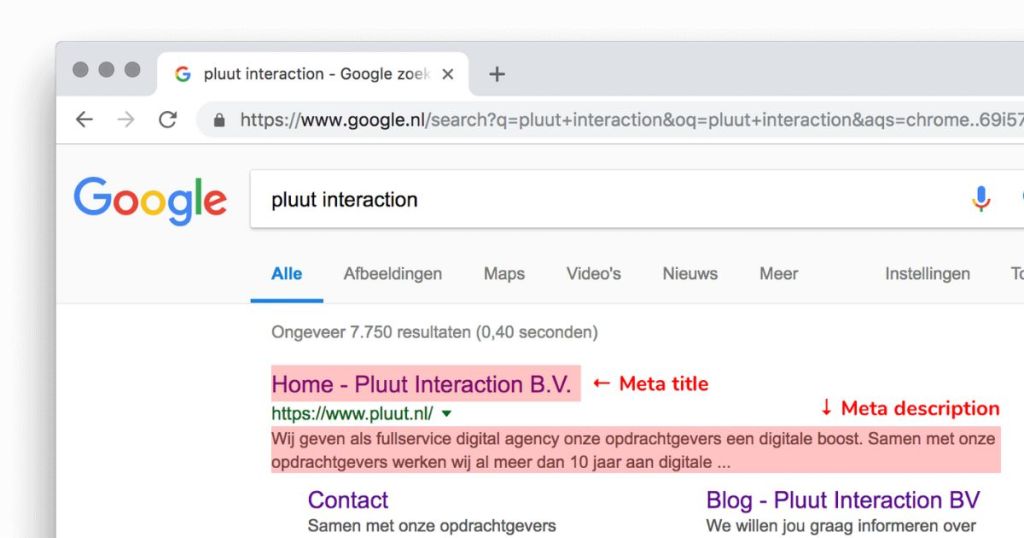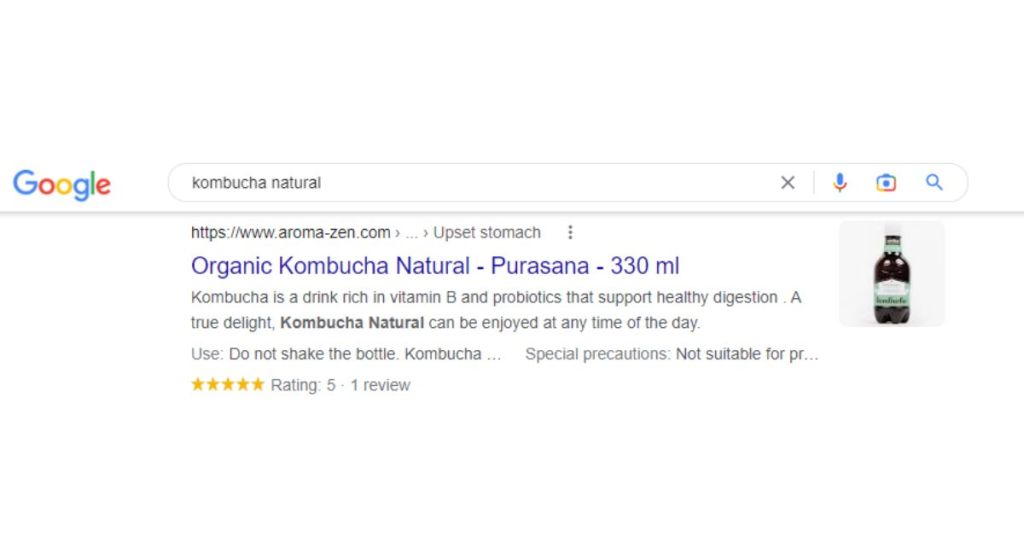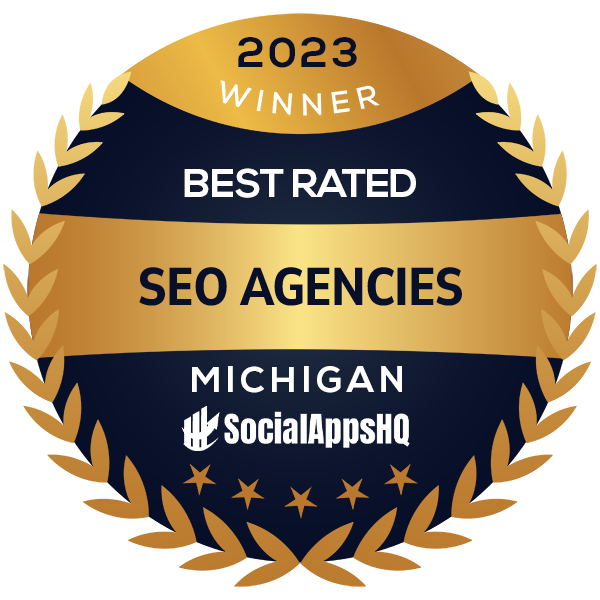The meta description can be a term you’ve heard about or something you’re unfamiliar with. It continues to be a significant element in how well your pages rank. If you are a beginner starting on your first page, you will have many things to learn, and meta description is one of the important terms. This article will help you understand this concept and how to write a meta description through some basic guidelines.

What Is A Meta Description?
A meta description is a little snippet you see beneath a page’s title in Google’s organic search results, which contains a short description of your page. It informs the users about the information on the page and how it pertains to their search query.
In contrast to page titles, meta descriptions do not affect SEO rankings. But they do encourage users to navigate through to a page and are an important component of efficient on-page SEO.

Why Is Meta Description Important?
Although search engines don’t use meta descriptions in their ranking algorithms, there are still some essential benefits from a good meta description.
Firstly, it informs Google about the content of your webpage. After reading and understanding your meta description, Google will be more likely to rank your website to respond to search queries.
In addition, Google utilizes click-through-rate to determine how well-performing your page is. It will consider your page a good result and increase your ranks if more people click on your result. Giving a solid description that can make a consumer want to learn more about you is the ideal approach to persuade them to click on your website. Well-crafted meta descriptions can increase the likelihood of a web page being selected as a featured snippet, earning greater visibility and driving more traffic.

How To Write A Meta Description?
Writing a meta description is relatively easy for a good writer. However, you must consider the 8 points below to create an optimized meta description for search engines.
Put yourself in the customers’ shoes
You have to think about what you are offering and why customers should buy from you. Focus on what the searcher is looking for rather than what you want to say about your company, website, or product.
For example, a product page’s meta description needs to deliver two things: your products and their competitive advantages that customers expect when searching.
Make it actionable by using an active voice
If you consider the meta description an invitation, you must consider your user and their motivation to visit your page. Try to use active voice, and address the customers directly.
Make sure your description isn’t tedious, complex, or too mysterious. Visitors should be aware of what to expect from your page.

Include a call to action
Adding a call to action in your meta description will inspire people to click on your page. They make it easier for users to comprehend what you offer and what to expect after clicking.
“Learn more,” “Get it now,” or “Test it for free” are some popular and useful phrases that you can apply to make a call to action.
Keep a reasonable length
There is no correct length for a description. It depends on what message you want to convey. However, if you look at the Google search results, you’ll typically get snippets between 155 and 160 characters.
There is a limit to what can appear on the search engine result page, which is approximately 160 characters. Google will truncate anything longer. Therefore, keep your meta description short (around 155 to 160 characters) and simple to understand.
Verify that it corresponds to the page’s content
This point is a crucial one. If you use meta descriptions to deceive users into clicking on your result, Google will find out. If you do it, they might even punish you for it.
Moreover, wrong descriptions will raise your bounce rate. It will also undermine public confidence in your business.
Make it distinctive
The user experience in Google will suffer if your meta description is similar to those for other pages. All your pages will look the same even though their titles may differ because they all share the same descriptions.
If you don’t have time to make a separate meta description for every page, prioritize your content and, at the very least, write descriptions for the important URLs, such as your main page and popular pages.

Use your emphasized keyword
Google will be more likely to use and emphasize the search keyword if it coincides with a section of the meta description. Using underlined keywords will make the connection to your website even more appealing. Sometimes Google will even highlight synonyms.
Display specs as necessary
Focusing on the technical details can be wise if you sell products on some big eCommerce platforms geared toward tech-savvy customers. You might mention the price, SKU, manufacturer, etc. You won’t need to persuade the visitor if they actively seek that thing.
3 Meta Description Examples
Meta descriptions come in three different categories. Here we provide each type’s example for your convenience and understanding.
Homepage meta description
This meta-description type provides a comprehensive overview of the page’s content and a persuasive reason for clicking the title tag. Many people searching won’t even be aware that they are deciding because everything happens swiftly and smoothly. They won’t have to think about it; they’ll click the link to quench their curiosity.
Here is an example of a homepage meta description:

The first five words in this meta description can give customers an idea of what they sell or which industry they belong to. Then, the remaining keywords also bring excellent motivation to readers who are doing business.
Product page meta description
Because your product pages do not represent your whole company, creating meta descriptions is more straightforward than making them for your homepage.
If the product is in high demand, the product page meta description should specify the technical specifications and model number and explain why it is fantastic for the potential customer.

This meta description shows all the details of the products, including material, size, types, and price.
Category page meta description
The category page meta description is also a necessary type that you need to know.
This page aims to compile related products for buyers to choose from. Therefore, your category page meta description should entice visitors by displaying pertinent information about the collection.
Below is an example of a category page meta description from Ralph Lauren. They list many women’s clothing types, from polo shirts, blouses, jeans, sweaters, etc. From this, customers can expect which women’s clothing type they can find from this brand when they click the page.

Why Won’t Google Use My Meta Description?
Even though it takes time and effort to create a meta description for your page, sometimes Google will not use it.
There are several reasons that can affect Google’s decision to ignore your meta description, including
1. Your meta description doesn’t match the content of your page: Google may decide to create its description based on the content of your website if your meta description does not accurately summarize the information on your page.
2. It is too long (over 320 characters) or too short (under 70 characters): Google will not choose to use your meta description. In this case, try to create your meta description from 120 to 158 characters.
3. Google regards your meta description as spam: Google may decide not to utilize your meta description if it contains spammy language or seems excessively promotional.
4. Your page’s ranking isn’t high enough: In some cases, Google may use an alternative description that it thinks is more appropriate to the user’s search.
5. The change of Google algorithm: Occasionally, Google might make algorithmic adjustments that impact how meta descriptions appear in search results.
Frequently Asked Questions
How long should a meta description be?
Although technically, meta descriptions can be any length; Google often truncates snippets to between 155 and 160 characters. We advise keeping meta descriptions’ length within this range to ensure that they are appropriately descriptive. The “ideal” length will vary based on the circumstance, so focus on providing value and encouraging clicks instead.
Do keywords matter in a meta description?
Yes, using keywords is essential not only in a meta description but also in a meta tag. When visitors search for those particular keywords, using relevant terms in your meta description can help your page appear in search results.
However, it would help if you use keywords naturally and do not pack your meta description with too many keywords. This action can be perceived as spammy and may harm your search engine rankings.
What is a good meta description?
A good meta description should be the best summary content of your site, including relevant keywords, be specific to each page, and be written in a natural way that encourages visitors to visit your website. In addition, its length should be from 155 to 160 characters.
Does Google rewrite meta description?
If Google determines that the original meta description is unsuitable for the user’s search query, has too many or too few characters, or uses spammy language, Google may rewrite the meta description.
Conclusion
In general, you have just learned how to write a meta description and optimize it to increase your page ranking. It is time to review your website, add a good meta description to each page type and make your page more visible and reliable to all customers. If you don’t have enough time to make it on your own, let our SEO services support you.
Co-Founder & General Manager @ ROI Digitally






